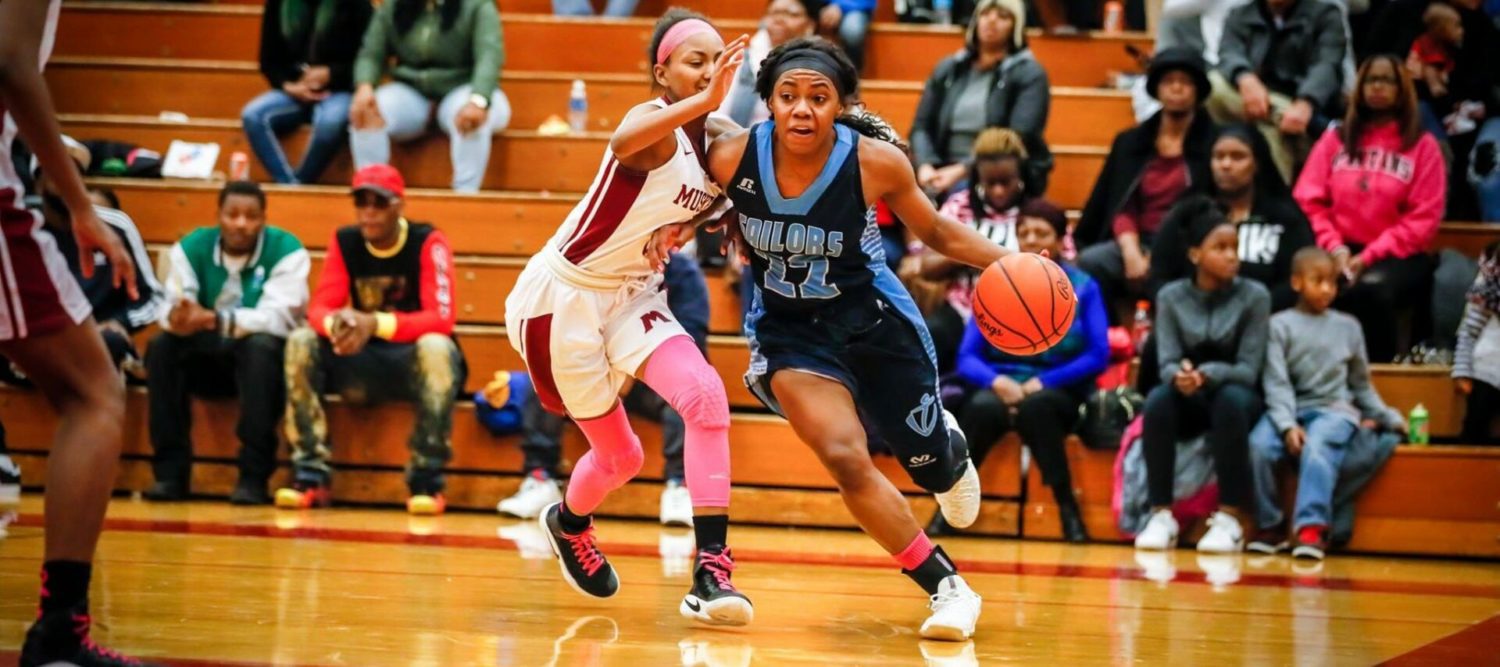By Ron Pesch
LocalSportsJournal.com
 NORTON SHORES–SportHouse – the former Norton Pines – is a family affair for the Hogebooms.
NORTON SHORES–SportHouse – the former Norton Pines – is a family affair for the Hogebooms.
While the facility, acquired about 2 years ago, can be depicted as simply a physical fitness center, it really is an amalgamation of the beliefs and philosophies of former National Football League quarterback, Gary Hogeboom, and his family.
His life has been built around sports, family, bringing people together as a team, working to improve,and ultimately, impacting lives through health and fitness.
It is a desire he shares with his family. Hence, SportHouse is a place for everybody.
“We’re all so similar,” said Hogeboom, reflecting on the area’s diverse population and the desire to bring those communities together. “That’s our main reason for doing this. This is exactly what we want in a facility.”
For him, it’s a reflection of the way he has raised his kids, and how he deals with people, family, and friends.
“We said, ‘Hey, this area needs it, it would be great for this area, it would help all the communities,’ and that’s what we’re trying to do.”
A fifth-round draft pick of the Dallas Cowboys in 1980 out of Central Michigan University, Hogeboom played prep sports at Grand Rapids Northview.
He was, by his own description, a late bloomer.
“I was one of the smallest kids in my freshman year of high school, then grew a lot…my Dad grew four inches when he was in college.”
In an era where specialization was not the norm, Hogeboom got involved in everything.
“I swam until my ninth grade year at a local pool. We had swim practice every morning at 7:00,’he said.
“In high school in my freshman year, I played tennis. My sophomore year, I played baseball, because I played baseball growing up. I loved to play outside hockey in the wintertime and do multiple things.In my junior year, I knew I had to get quicker and faster, so I went out for track and threw the discus and ran the 440 and 880.
“I was probably a better basketball player in high school than I was in football. We didn’t have 7-on-7 football in the summer. There wasn’t travel ball like you see now.”
Hogeboom became the varsity quarterback in his junior year, but Northview’s football team went an unremarkable 3-6 in 1974. However, things improved greatly by his senior season. A 28-8 loss in Week 2 to fellow OK-Red opponent East Grand Rapids was one of only two losses that season. In Week 5, the Wildcats were upset by Jenison, 15-14.
In the seventh game of the year, Hogeboom passed for 100 yards in a 20-12 win over Holland West Ottawa, and his “rifle for an arm” impressed the Panthers’ coach.
“He’s definitely got the tools to play major college football,” said Delbert ‘Deb’ Nolan.
In Week 8, the Wildcats upset previously unbeaten East Kentwood, 22-20, then ended the season with an 18-0 win over Coach Fred Julian’s Grand Rapids West Catholic squad.
A former football player at the University of Michigan, Julian played a year in the old American Football League for the New York Titans in 1960. In 1969, he became the head coach at West Catholic and in 1975, he was one of the West Michigan representatives on the Detroit Free Press Football All-State board, filing weekly reports on the top players from the area. A day before his team’s defeat at the hands of the Wildcats, Julian’s report had recognized Hogeboom – now 6-3, and 185 pounds – as one of the “two more talented quarterbacks in the area.”
Come season’s end, Hogeboom earned honorable mention on the state’s various All-State teams. Both CMU and Mid-American Conference-rival, Western Michigan University took interest in the quarterback.
What caused the schools to recruit the Northview athlete? Hogeboom himself isn’t sure.
“I didn’t reach out to them, they came to me. I had attended a couple football camps – perhaps they saw me at one of those.”
A former Julian QB at West Catholic, Mike Franckowiak, had quarterbacked Central Michigan University to the NCAA Division II national championship with a 12-1-0 record in 1974. A year later, CMU moved to full membership in Division I, joining the MAC. Franckowiak spent 4 seasons in the NFL. CMU was a strong recruiter of Michigan high school kids, and to their credit, the Chippewas revisited Grand Rapids for another signal-caller.
Following the 1975 season, Central football head coach Roy Kramer attended a Northview basketball game during Hogeboom’s senior year and offered him a scholarship. He accepted. Also signing with CMU was high school teammate Brian Blank, a talented split end and state track champion.
In Mt. Pleasant, Hogeboom saw occasional action at quarterback in his freshman and sophomore seasons, playing in place of injured starter Ron Rummel. When Kramer left Central in August 1978 to become athletic director at Vanderbilt University, Herb Deromedi, an assistant on Kramer’s staff since 1967 and the team’s current defensive coordinator, was named head coach.
Kramer would ultimately serve as commissioner of the Southeastern Conference (SEC) and is considered the father of the college football’s Bowl Championship Series (BCS).
“It was a good transition for me and, I think, Central Michigan,” recalled Hogeboom. “Roy had success up there, don’t get me wrong, and he went on to many great things in the SEC. But I thought (the way) Herb handled the team was just phenomenal.”
Under Deromedi, Hogeboom took charge of the team as a junior, leading the Chippewas to a 9-2-0 mark in 1978. In his senior year, he guided CMU to a 10-0-1 record and the school’s first MAC championship.
At the season’s end, Hogeboom was named CMU’s MVP, then was awarded the MAC Offensive Player of the Year award. The quarterback completed 208-of-355 career passes for 3,088 yards and 19 touchdowns and rushed for another 957 yards and 16 TDs while in Mt. Pleasant. His season brought the attention of the NFL and he had worked out for most every team prior to the draft.
“Obviously, I would have liked to have thrown a lot more often in college,” said Hogeboom, recalling those days, “but we were a triple-option team and we had success doing that.”
The Dallas Cowboys had reached out to Hogeboom by letter, but no one had seen him work out.
Following a visit to Notre Dame in April, Coach Dan Reeves drove up to Grand Rapids. Later a highly successful head coach in the NFL, but at that time the Cowboys’ offensive coordinator under Coach Tom Landry, Reeves watched Hogeboom throw at a workout at the city’s Junior College.
A week later, in a draft that saw the Detroit Lions name Billy Sims as the first player picked, Hogeboom was the eighth of 14 players chosen from Michigan colleges. He spent 10 seasons in the NFL at quarterback – six with the Cowboys, three with the Indianapolis Colts, and a season with the Phoenix Cardinals – and threw for over 9,400 yards and 49 TDs over 79 games before hanging up the cleats.
Following football, the Hogeboom family spent about 15 years in northern Michigan, first in Traverse City and then in Glen Arbor.
Why Michigan?
“We love the four seasons.”
Up north, Hogeboom coached, ran physical fitness boot camps, and got involved in real estate.
Ultimately, they wanted to move closer to a big city.
“It was a great time, and we met a lot of great people up north. I loved it up there, we just needed something a little busier, a little more people.”
The next stop was Grand Rapids for a couple of years before moving to Grand Haven.
To no surprise, sports – and its ability to impact and unite people – remain close to Hogeboom’s heart.And he has no doubt that participating in multiple sports during his youth made him a better football player.
“Without question,” he emphasized. “I think that made me who I am today.” He then quickly pointed out that research backs the opinion.
“Look at the numbers. It’s unbelievable.
For over a decade, Tracking Football has been breaking down details on the athletes that make up the annual NFL draft. The 2022 overview found:
233/262 (88.9%) picks were multi-sport athletes in high school
180/262 (68.7%) participated in Track & Field
113/262 (43.1%) were 3+ sport athletes in high school
Only 29/262 (11%) were Football-only specialists
Hence, Hogeboom takes issue with coaches who demand loyalty by an athlete to a single sport.
“I really want to say to the coaches to cut the kids some slack. It’s one thing if the kid is being lazy, sitting at home on a couch. But if they’re out there practicing or playing another sport, they’re getting better. You’re learning about your body, and what it can do.
“If they (need) to skip a practice for another sport, be a little more lenient than you would be normally. A good friend of mine’s son (won Michigan’s) Mr. Soccer as a senior. His basketball coach made him quit because he had US National soccer tryouts. So, the kid didn’t play basketball when he could have done both.
“If our coaches would just understand that football might not be their No. 1 sport, it’s basketball. Volleyball might be your No. 1 sport and your No. 2 sport is something different.
“There’s always extenuating circumstances, but during basketball season, if a football player wants to shoot hoops on the weekend and get his shot ready for basketball because basketball is his favorite sport and football is his second sport, allow these kids to do that. You can get hurt doing anything, but to have a kid in the gym or the weight room or on the field during their off-time – that should be encouraged.
“Everything you learn in sports you take to life…to friends, family, to your spouse, to the people you meet. You learn to communicate. You learn to respect and to love each other. You learn to work, and you learn that (sometimes) you get your butt kicked.
“I’m not saying you can’t get these things from other avenues growing up in our society, but this is what I know and I love.
“So we wanted to integrate that into a facility.”
SportHouse provides a wide range of fields, courts, camps, and top-of-the-line weight equipment, providing activities and options for kids of all circumstances to improve performance and get bigger, stronger, and quicker, and the opportunity for adults to get healthy and stay fit.
“We said, ‘Hey, this area needs it. It would be great for this area. It would help all the communities come together,’ and that’s what we’re trying to do.”












